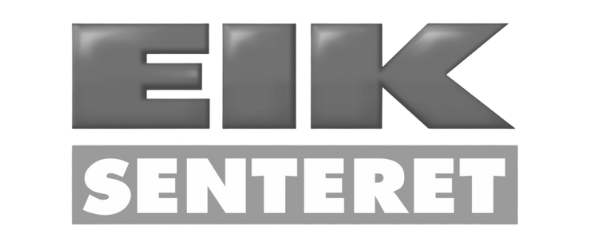Ensuring Uptime
ClearOps ensures part and technician availability across complex OEM-dealer networks—globally for OEMs, locally for dealers.














we work with globally leading brands.


















ClearOps at a glance
Improve part sales
15%
Increase customer fill rates
43%
Reduce working capital
20%
Reduce downtime
2 days reduced downtime
The foundation of a successful dealer network: Connectivity
ClearOps seamlessly integrates OEM parts and service systems with Dealer DMS systems, unlocking global visibility and automating workflows. Transitioning from manual processes to fully automated OEM-dealer collaboration—this is the future.

A new era of service excellence
From OEM to Dealer to Machine – ClearOps connects the entire service supply chain, automating parts and service operations to ensure global uptime.
Connectivity
Powerful integration with Dealer DMS and relevant OEM parts and service systems.
Tailored to your needs
OEMs and dealers have unique needs, and we tailor solutions to meet them.
Future-proof
We ensure your service supply chain tackles today’s challenges and navigates complexity with ease.
No more guess-work
You can't improve what you don't measure - we digitize, optime and automate.
Solution-oriented team
Count on our team to go the extra mile, always finding innovative solutions to new challenges.
Easy-adoption
We drive adoption with an intuitive system that’s easy to integrate and use.
Seamless collaboration between OEMs and dealers
What if a platform could manage an entire ecosystem of machines, parts, and services? ClearOps' hyper-connected supply chain platform makes it possible—and more.
Make sure your dealers are enabled to provide world class customer services.
Global Dealer and Customer Visibility
Retail Inventory Management
Proactive Service Enablement
.avif)
Repair more machines in less time.
Best in Class Demand Planning
Automated Order Management
Field Service Management

How leading OEMs and dealers transformed their service business

Trond Randbo Kjempekjenn
CEO at Eiksenteret


Stefan Hillienhoff
Procurator @ Jungheinrich Service & Parts AG & Co. KG


Florian Cadoret
Global Customer & Dealer Integration Manager at Terex


Reuven Chavira
Manager, Global Vendor Managed Inventory (VMI) and Integration at AGCO

We want you to succeed!
Maximize your success in a decentralized dealer network with our comprehensive guide.

You have questions?
We have answers!
Find our everything you need to know
ClearOps is designed to rapidly integrate with OEMs and their dealer networks. Our advanced integration hub is already connected to over 80 different ERP systems, which allows for swift and sustainable system integration. While the timeline depends on the size of the dealer network and underlying ERP systems, we prioritize efficiency and ensure a streamlined implementation process. Gain visibility and control over your fragmented dealer and distribution networks in no time with ClearOps’ hyperconnectivity solution suite.
At ClearOps, we understand the importance of data privacy. We are proud to be ISO certified and fully compliant with GDPR regulations. Rest assured that your personal data remains protected. Our focus lies in operational excellence of parts, products, technicians, and machines. Any personal data is carefully filtered and blacked out to safeguard privacy and maintain confidentiality.
Absolutely! ClearOps is built with a strong emphasis on system integration. We possess the capability to seamlessly connect with various systems, allowing for frictionless collaboration between you, your dealers, and your end customers. Our advanced transformation and processing techniques ensure that all systems speak the same language, enabling efficient data exchange. With ClearOps, bridge the gap between your fragmented networks and customers through our hyperconnectivity solution suite.
Unlock the power of comprehensive ROI measurement with ClearOps. We conduct a thorough business analysis and collaborate with you to calculate the return on investment for your specific needs. Whether you seek end-to-end supply chain visibility, optimized parts and product management, or our service solution suite, we deliver quantifiable results. By consolidating all relevant data in a central hub, enhanced by advanced control tower applications, ClearOps has boosted customers’ fill-rates by 43%, increased part sales by 15%, and reduced working capital by 20%.
Embark on a digital transformation journey with ClearOps, backed by your willingness and a committed team. Our implementation process is tailored to your resource availability and respects your constraints. While a few IT resources and a project manager from your side are essential, we handle the heavy lifting. We value team buy-in as a key success factor and ensure a smooth setup process that aligns with your goals and requirements.
By choosing ClearOps, you gain numerous advantages over building an in-house solution. Experience the power of instant connectivity with thousands of dealers and integration with over 80 different ERP systems. Avoid the lengthy and resource-intensive process of building such connections from scratch. Our platform harnesses global sophisticated data mining techniques, providing optimization power that is beyond reach for individual OEMs. With ClearOps, you skip the need for an in-house development team and months of testing and tweaking. Our expert tech professionals and supply chain pros work side-by-side with you to ensure a rapid and efficient setup. Tap into years of experience and knowledge, benefiting from ongoing support whenever you need it. Choose ClearOps to bridge the gap and gain visibility.
Absolutely! ClearOps has a proven track record of successfully connecting OEMs with thousands of dealers and systems. We understand the diverse interests of stakeholders and are skilled in navigating these dynamics. Our team takes responsibility for managing expectations and maximizing stakeholder value. With ClearOps as your partner, gain the support and buy-in of all stakeholders, ensuring a unified and successful implementation of our hyperconnectivity solution suite.
Book your free demo!
Get in contact with us today and realize your aftersales success tomorrow.
ClearOps is an aftersales platform that enables collaboration between manufacturers, dealers and end customers.
We are already trusted by the world's leading manufacturers and over 8000+ dealer locations.

